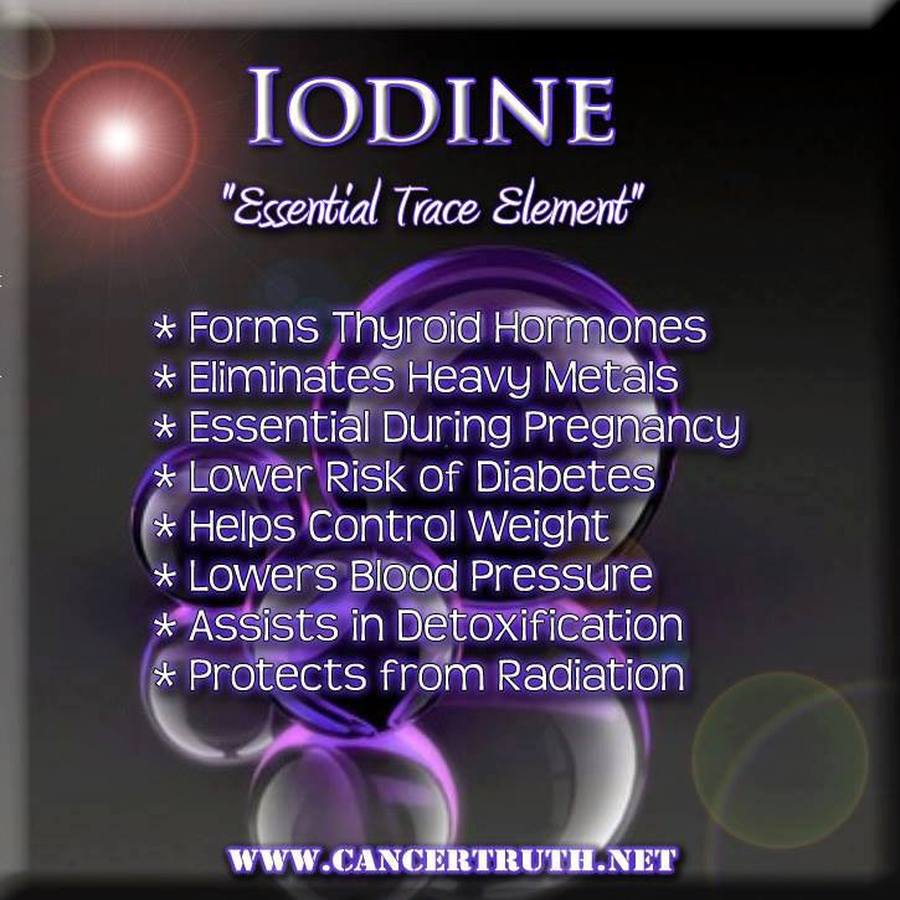
Iodine is an essential trace mineral necessary for the thyroid gland to function.
The thyroid gland controls the body’s metabolism and how quickly the body uses energy; makes proteins, regulates growth and development, and controls how sensitive the body should be to other hormones.
It participates in these processes by using iodine taken in from food to produce thyroid hormones.
Medical studies indicate, a deficiency of iodine in the diet can result in an enlargement of the thyroid gland;
* lethargy
* fatigue
* weakness
* depleted immune system
* slowed metabolism
* autism
* excessive weight gain.
A lack of proper iodine in the diet has also been linked to certain, commonly medicated mental and behavioral issues such as depression and anxiety.
But the good news is, many easily obtainable, completely organic vegetarian foods containing iodine can eliminate the concerns associated with iodine deficiency.
The Recommended Daily Allowance or (RDA) for iodine is 150 micrograms for people over 14 years of age.
The RDA standard for children ages 1-8 is 90 micrograms.
Children ages 9-13, the daily dose is 120 micrograms.
If you’re pregnant or breastfeeding, it is recommended that you get 290/mcg every day.
Most of the iodine on the earth is found in the ocean. The amount of iodine in soil varies considerably. Areas close to the ocean have more iodine in the soil because of mist from the ocean. Mountainous regions are often low in iodine because the erosion of the exposed soil leaches iodine. Low-lying areas that are frequently flooded are also typically low in iodine. Soil iodine content is important because it influences the amount of iodine in crops grown on that soil. Fruits and vegetables grown on iodine-rich soil are higher in iodine than those grown in areas where the amount of iodine in soil is low.
Up until 1924, the year when iodine was added to salt in the United States, iodine deficiency was fairly common in the United States, especially in the Midwest and Great Lakes regions, the so-called Goiter Belt. Goiter (an enlarged thyroid gland) can be due to iodine deficiency. After iodized salt was introduced, the incidence of iodine deficiency dropped.
In the United States, both iodized and non-iodized salt are sold. Only about 70% of the table salt sold in the United States is iodized, according to the Salt Institute. Iodized salt is identified on the package label. Food manufacturers, the fast-food industry, and restaurants frequently do not use iodized salt. As people eat out more often and buy more processed foods, iodine intakes in the United States have declined. The iodine content of food is rarely listed on food packages so, for most foods, consumers have no way of knowing the iodine content.
Sea Veggies
Among the healthy, iodine rich vegetables that grow in the sea are Kelp, Kombu, Arame, Wakame, Hiziki.
And among those listed, Kelp provides the richest source of dietary iodine.
In fact, Kelp is the richest source of dietary iodine found throughout all the various foods on the entire planet.
Only one serving of Kelp delivers a whopping four times the normal daily requirement of Iodine!
1) Kelp: 1 tablespoon contains 2000/mcg of iodine.
2) Kombu: 1 tablespoon contains 780/mcg of iodine
3) Arame: 1 tablespoon contains 730/mcg of iodine
4) Wakame: 1 tablespoon contains 80/mcg of iodine
5) Hiziki: 1 tablespoon contains about 780/mcg of iodine
Eating spoonfulls of these sea vegetables is perhaps not the
most highly recommended method of ingesting them.
Sprinkling them on soups and salads is ideal. The powder can be easily used in a smoothie as well.
Cranberries
Cranberries have a rich color and a unique flavor. If you’re able to enjoy the sour taste, cranberries provide many health benefits. They have a high concentration of Vitamin C, Vitamin K, and fiber, and they’re known to prevent urinary tract infections. They’re also a stellar source of iodine; four ounces of these tart treats contains well over the recommended daily value of iodine.
Serving Size (4 ounces), 400 micrograms of iodine (267% DV), 52 calories.
Himalayan Crystal Salt
If you’re trying to avoid conventional table salt but you’re worried about not getting enough iodine, Himalayan crystal salt is a viable alternative. Half a gram of Himalayan crystal salt provides 250 micrograms of iodine—over 150% of the amount the average body needs each day—so enjoy this special salt in moderation as part of a balanced diet.
Conventional table salt is fortified with Iodine, it is not naturally occurring as it is in Himalayan Crystal Salt.
Serving Size (1/2 gram), 250 micrograms of iodine (167% DV), 0 calories.
Baked Potatoes
In order to get the necessary nutrients, baked potatoes are a better option than mashed potatoes. Most of the important dietary staples, such as fiber, vitamins, and potassium are contained in the skin. Baked potatoes are also a great source of iodine; one medium potato provides about 40% of the recommended daily amount of iodine.
Serving Size (1 medium potato), 60 micrograms of iodine (40% DV), 161 calories.
Navy Beans
Beans are some of the healthiest and most versatile foods on the planet.
Enjoy a half-cup serving with any meal, and you’ll provide your body with a respectable amount of protein, copper, potassium, calcium, folate, and iodine. If you’re trying to prevent an iodine deficiency, navy beans are an excellent remedy because of the many additional nutrients they add to your diet.
Serving Size (1/2 cup), 32 micrograms of iodine (21% DV), 128 calories.
Strawberries
Strawberries are a tasty and nutrient rich fruit that provides your body with many vitamins and minerals. Strawberries are deliciously sweet, but they’re a surprising source of iodine. A one-cup serving contains 13 micrograms of iodine, or just under 10% of what the average person needs to consume in a day.
Serving Size (1 cup), 13 micrograms of iodine (9% DV), 46 calories.